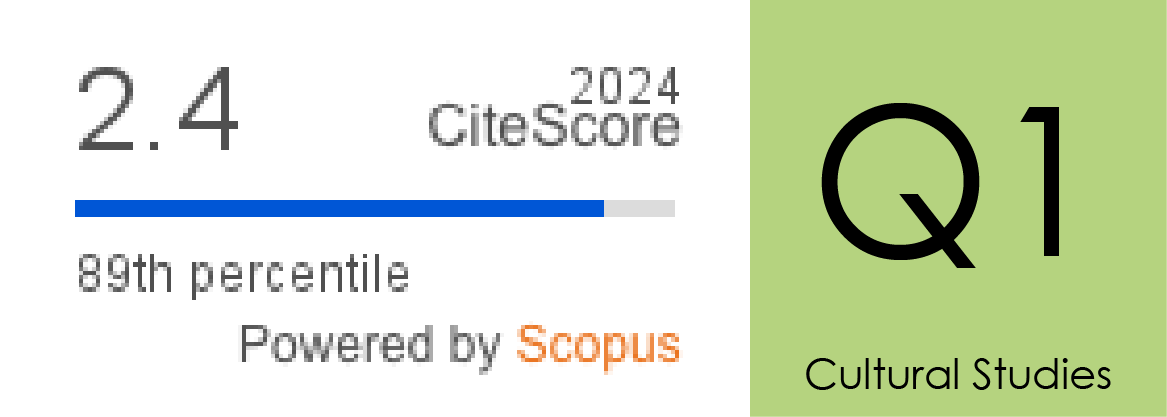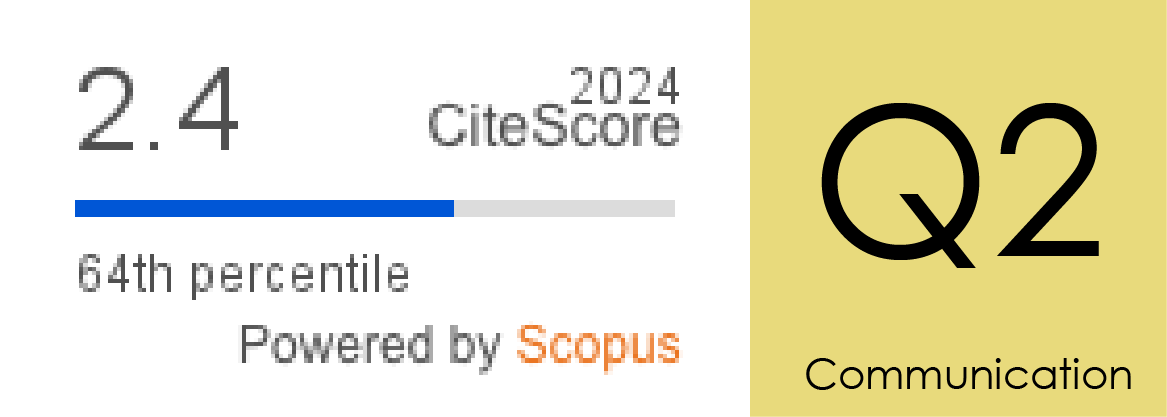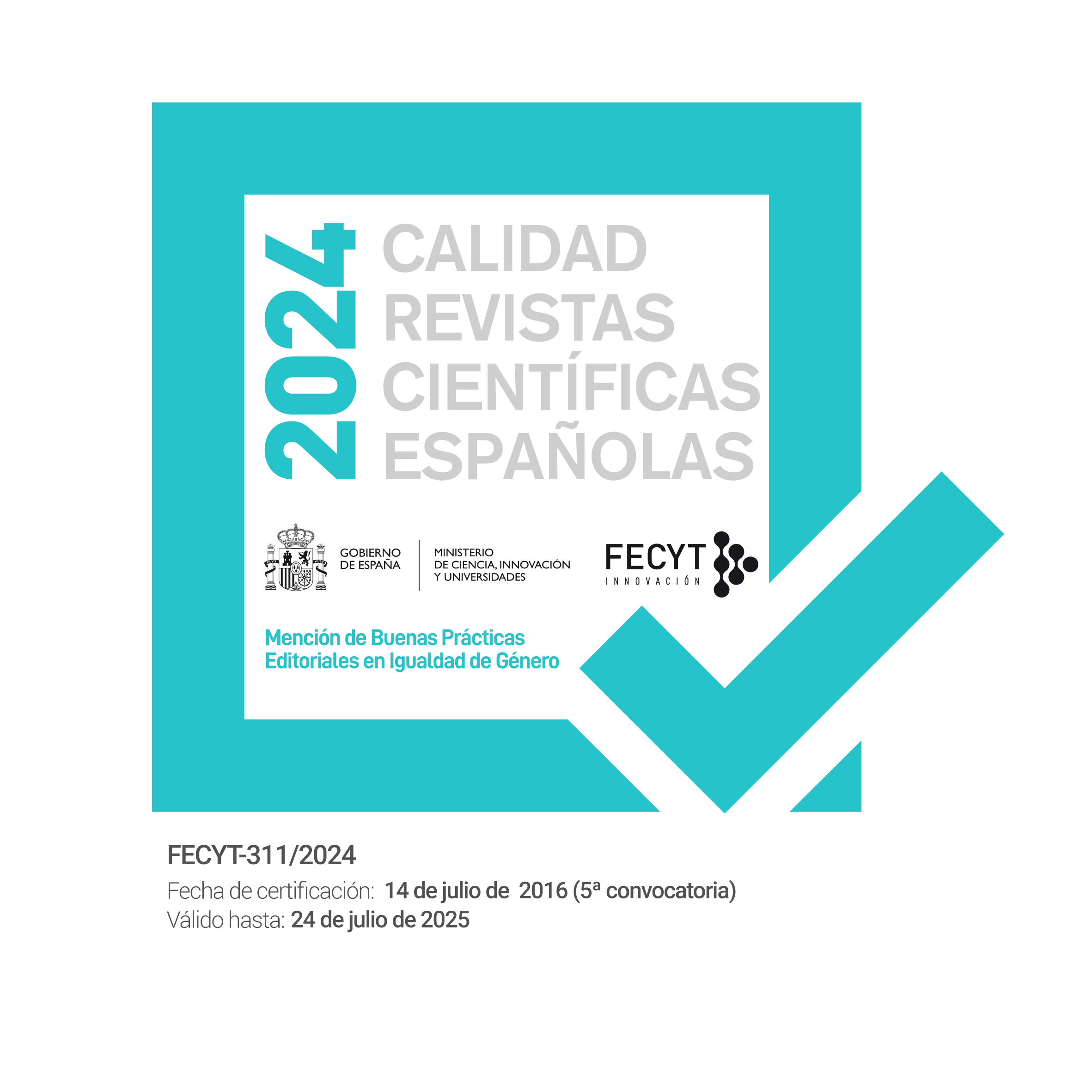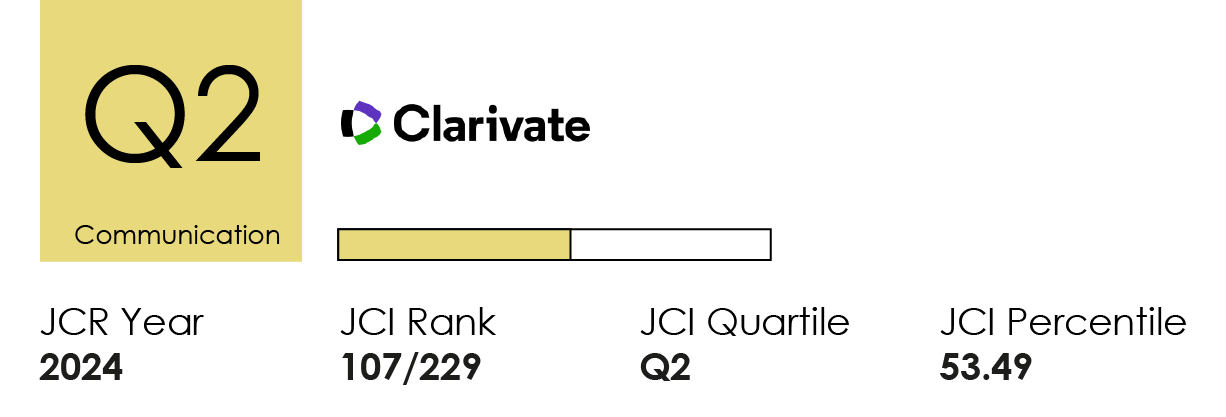Cobertura en la prensa europea de la adaptación de las ciudades a las olas de calor y al cambio climático
DOI:
https://doi.org/10.14198/MEDCOM000024Palabras clave:
olas de calor, cambio climático, ciudades, prensa, europaResumen
Las ciudades europeas están sufriendo en los últimos años intensas olas de calor, favorecidas por el cambio climático. La ciudad es a la vez uno de los grandes contribuyentes a las emisiones de gases de efecto invernadero pero también un espacio clave para la adaptación y mitigación del cambio climático. Este estudio aborda de qué forma las ciudades europeas son representadas en 393 noticias periodísticas sobre las olas de calor sufridas durante los meses de junio de 2017 y 2019. Para ello se analiza la cobertura de 19 periódicos de Francia, Reino Unido, Italia, Portugal y España. Los resultados señalan que el país es la variable más determinante en la rigurosidad y profundidad del tratamiento periodístico, seguido por la orientación ideológica, la sección del medio y la autoría. Las noticias sobre las olas de calor en la ciudades europeas que tratan aspectos técnicos como el efecto Isla de Calor Urbana son las que mejor abordan las medidas estructurales de adaptación y mitigación.Citas
AEMA (2018). Unequal exposure and unequal impacts: Social vulnerability to air pollution, noise and extreme temperatures in Europe. EEA Report NO 22/2018. https://bit.ly/3jAvLN9
Águila Coghlan, J. C. (2016). La comunicación del cambio climático: análisis del discurso de los telediarios españoles sobre las cumbres de Cancún y Durban. Madrid, España: Universidad Complutense de Madrid. https://bit.ly/3mptAy3
Anderson, A. (2009). Media, Politics and Climate Change: Towards a New Research Agenda. Sociology Compass, 3(2), 166–182. https://doi.org/dr8hc2
Andonova, L.; Betsill, M. & Bulkeley, H. (2009). Transnational Climate Governance Global, Environmental Politics, 9(2), 52-73. https://doi.org/ckzgck
Araos, M.; Berrang-Ford, L.; Ford, J. D.; Austin, S. E.; Biesbroek, R. & Lesnikowski, A. (2016). Climate change adaptation planning in large cities: A systematic global assessment. Environmental Science & Policy, 66, 375-382. https://doi.org/f9c9jt
Arnfield, A. J. (2003). Two decades of urban climate research: a review of turbulence, exchanges of energy and water, and the urban heat island. International Journal of Climatology: a Journal of the Royal Meteorological Society, 23(1), 1-26. https://doi.org/bcmxjg
Åström D. O.; Forsberg, B. & Rocklöv, J. (2011). Heat wave impact on morbidity and mortality in the elderly population: a review of recent studies. Maturitas, 69(2), 99-105. https://doi.org/fpdb68
Barranquero Carretero, A. y Marín García, B. (2014). La investigación en comunicación y periodismo ambiental en España: Estado de la cuestión y revisión bibliométrica de las principales revistas académicas en comunicación (2005-2013). Prisma Social, 12, 474-505. https://bit.ly/3qdqtLO
Betsill, M. & Bulkeley, H. (2003). Cities and climate change. Routledge. https://doi.org/bfx97g
Boykoff, M. T. (2007). Flogging a dead norm? Newspaper coverage of anthropogenic climate change in the United States and United Kingdom from 2003 to 2006. Area, 39, 470–481. https://doi.org/bwp6gg
Boykoff, M.; Aoyagi, M.; Ballantyne, A.G.; Benham, A.; Chandler, P.; Daly, M.; Doi, K.; Fernández-Reyes, R.; Hawley, E.; McAllister, L.; McNatt, M.; Mocatta, G.; Nacu-Schmidt, A.; Oonk, D.; Osborne-Gowey, J.; Pearman, O.; Petersen, L.K.; Simonsen, A.H. & Ytterstad, A. (2020). World Newspaper Coverage of Climate Change or Global Warming, 2004-2020. Media and Climate Change Observatory Data Sets. Cooperative Institute for Research in Environmental Sciences, University of Colorado. https://doi.org/fkrv
Boykoff, M. & Luedecke, G. (2016). Elite News Coverage of Climate Change. Oxford Research Encyclopedia of Climate Science. https://doi.org/gc3gnh
Bulkeley, H.; Schroeder, H.; Janda, K.; Zhao, J.; Armstrong, A.; Chu, S. Y. & Ghosh, S. (2009). Cities and climate change: the role of institutions, governance and urban planning. Change, 28, 30.
Brulle, R. J.; Carmichael, J. & Jenkins, J. C. (2012). Shifting public opinion on climate change: an empirical assessment of factors influencing concern over climate change in the U.S., 2002 – 2010. Clim. Change, 114, 169–188. https://doi.org/f36f23
Carter, J. G.; Cavan, G.; Connelly, A.; Guy, S.; Handley, J. & Kazmierczak, A. (2015). Climate change and the city: Building capacity for urban adaptation. Progress in planning, 95, 1-66. https://doi.org/f6xjmj
Carvalho, A. & Burgess, J. (2005). Cultural circuits of climate change in UK broadsheet newspapers, 1985–2003. Risk analysis, 25(6), 1457-1469. https://doi.org/fw3nvk
CMCC (2018). The impact of adaptation measures in Urban Heat Islands, CMCC Foundation-REMHI Division. https://bit.ly/3hPNW12
Dalip, J.; Phillips, G. A.; Jelinek, G. A. & Weiland, T. J. (2015). Can the elderly handle the heat? A retrospective case-control study of the impact of heat waves on older patients attending an inner city Australian emergency department. Asia Pac J Public Health, 27, N1837. https://doi.org/fkrw
Dessai, S. & Sims, C. (2010). Public perception of drought and climate change in southeast England. Environmental hazards, 9(4), 340-357. https://doi.org/bzhbr4
Długosz, Z. (2011). Population ageing in Europe. Procedia - Social and Behavioral Sciences, 19, 47-55. https://doi.org/bshdw6
Dulac, F. (2016). Air quality and climate in the Mediterranean region. In S. Thiébault & J. P. Moatti (Eds.), The Mediterranean region under climate change: a scientific update (pp. 145-203). Paris, Francia: ALLENVI. https://doi.org/fkrz
Easterling, D. R.; Evans, J. L.; Groisman, P. Y.; Karl, T. R.; Kunkel, K. E. & Ambenje, P. (2000). Observed variability and trends in extreme climate events: a brief review. Bulletin of the American Meteorological Society, 81(3), 417-426. https://doi.org/ccf55b
Faust, E. & Strobl, M. (2018). Heatwaves, drought and forest fires in Europe: Billions of dollars in losses for agricultural sector, Munich RE.
Fernández-Reyes, R. y Rodrigo-Cano, D. (coords.) (2019). La comunicación de la mitigación ante la emergencia climática. Sevilla, España: Egregius
Fernández-Reyes, R. y Jiménez Gómez, I. (2019). La comunicación de la mitigación del cambio climático en prensa española. En R. Fernández-Reyes y D. Rodrigo-Cano (Coords.), La comunicación de la mitigación ante la emergencia climática (pp. 13-51). Sevilla, España: Egregius
Fernández Reyes, R.; Piñuel Raigada, J.L. y Vicente Mariño, M. (2015). La cobertura periodística del cambio climático y del calentamiento global en El País, El Mundo y La Vanguardia. Revista Latina de Comunicación Social, 70, 122-140. https://doi.org/fkr2
Gabriel, K. M. & Endlicher, W. R. (2011). Urban and rural mortality rates during heat waves in Berlin and Brandenburg, Germany. Environmental pollution, 159(8-9), 2044-2050. https://doi.org/dqmsc5
Gavin, N. T. & Marshall, T. (2011). Mediated climate change in Britain: Scepticism on the web and on television around Copenhagen. Global Environmental Change, 21(3), 1035–1044. https://doi.org/c6tkh2
Gill, S. E.; Handley, J. F.; Ennos, A. R. & Pauleit, S. (2007). Adapting cities for climate change: the role of the green infrastructure. Built environment, 33(1), 115-133. https://doi.org/b6fwr4
Gkiouzepas, G. & Botetzagias, I. (2017). Climate Change Coverage in Greek Newspapers: 2001–2008. Environmental Communication, 11(4), 490-514. https://doi.org/fkr3
Grundmann, R. & Scott, M. (2014). Disputed climate science in the media: Do countries matter? Public Understanding of Science, 23(2), 220–235. https://doi.org/c37v
Grundmann, R. & Krishnamurthy, R. (2010). The discourse of climate change: A corpus-based approach. Critical Approaches to Discourse Analysis across Disciplines, 4(2), 125–146. https://bit.ly/3o6rX8T
Guerreiro, S. B.; Dawson, R. J.; Kilsby, C.; Lewis, E. & Ford, A. (2018). Future heat-waves, droughts and floods in 571 European cities. Environmental Research Letters, 13(3), 034009. https://doi.org/gf659h
Guo, Y.; Gasparrini, A.; Li, S.; Sera, F.; Vicedo-Cabrera, A. M.; de Sousa Zanotti Stagliorio Coelho, M. & Overcenco, A. (2018). Quantifying excess deaths related to heatwaves under climate change scenarios: A multicountry time series modelling study. PLoS medicine, 15(7), e1002629. https://doi.org/gdx3bw
Hajat, A.; Hsia, C. & O'Neill, M. S. (2015). Socioeconomic Disparities and Air Pollution Exposure: a Global Review. Current environmental health reports, 2(4), 440–450. https://doi.org/ggd4gn
Hunt, A. & Watkiss, P. (2011). Climate change impacts and adaptation in cities: a review of the literature. Climatic change, 104(1), 13-49. https://doi.org/fr6fcr
Jiménez-Gómez, I. y Martín-Sosa, S. (2018). El estudio del cambio climático en la prensa a través de sus efectos: una propuesta metodológica. En D. Rodrigo-Cano; P. de-Casas-Moreno y P. Toboso-Alonso (Eds) Los medios de comunicación como difusores del cambio climático (pp. 107-122). Sevilla, España: Egregius.
Kapferer, J. N. (2011). Paris as a Brand. In K. Dinnie (Eds.), City Branding. Londres, Reino Unido: Palgrave Macmillan. https://doi.org/fkr4
Keellings, D. & Ayala, J. (2019) Extreme Rainfall Associated With Hurricane Maria Over Puerto Rico and Its Connections to Climate Variability and Change. Geophysical Research Letters, 46, 2964-2973. https://doi.org/c4z8
Kew, S. F.; Philip, S. Y.; Jan van Oldenborgh, G.; Van der Schrier, G.; Otto, F. E. & Vautard, R. (2019). The exceptional summer heat wave in southern Europe 2017. Bulletin of the American Meteorological Society, 100(1), S49-S53. https://doi.org/gf8vnh
Kim, D. & Lim, U. (2016). Urban resilience in climate change adaptation: A conceptual framework. Sustainability, 8(4), 405. https://doi.org/f8jwbs
Knowlton, K.; Rotkin-Ellman, M.; King, G.; Margolis, H. G.; Smith, D.; Solomon, G. & English, P. (2009). The 2006 California heat wave: impacts on hospitalizations and emergency department visits. Environmental health perspectives, 117(1), 61-67. https://doi.org/cts3bk
La Porte, T. (2013). City Public Diplomacy in the European Union. In M. K. D. Cross & J. Melissen (Eds.), European Public Diplomacy. Nueva York, EEUU: Palgrave Macmillan. https://doi.org/fkr5
Lemonsu, A.; Viguie, V.; Daniel, M. & Masson, V. (2015). Vulnerability to heat waves: Impact of urban expansion scenarios on urban heat island and heat stress in Paris (France). Urban Climate, 14, 586-605. https://doi.org/gfkd9z
Luber, G. & McGeehin, M. (2008). Climate change and extreme heat events. American journal of preventive medicine, 35(5), 429-435. https://doi.org/dn97rf
McEvoy, D.; Lindley, S. & Handley, J. (2006). Adaptation and mitigation in urban areas: synergies and conflicts. Proceedings of the Institution of Civil Engineers-Municipal Engineer, 159(4), 185-191. https://doi.org/btq3t5
Mitchell, D.; Heaviside, C.; Vardoulakis, S.; Huntingford, C.; Masato, G.; Guillod, B. P. & Allen, M. (2016). Attributing human mortality during extreme heat waves to anthropogenic climate change. Environmental Research Letters, 11(7), 074006. https://doi.org/fkr7
Mora, C.; Dousset, B.; Caldwell, I. R.; Powell, F. E.; Geronimo, R. C.; Bielecki, C. R.; Counsell, C. W. W.; Dietrich, B. S.; Johnston, E. T.; Louis, L. V.; Lucas, M. P.; McKenzie, M. M.; Shea, A. G.; Tseng, H.; Giambelluca, T. W.; Leon, L. R.; Hawkins, E. & Trauernicht, C. (2017) Global risk of deadly heat. Nature Climate Change, 7(7), 501-¬506. https://doi.org/b8st
Naciones Unidas (2018). World Urbanization Prospects: The 2018 Revision, Key Facts.Technical report. https://bit.ly/352wVxh
NASA (14/07/2017) June 2017 was fourth warmest June on record, NASA's Goddard Institute for Space Studies. https://go.nasa.gov/2JlTFzH
Nisbet, M. C. & Lewenstein, B. V. (2002). Biotechnology and the American media: the policy press and the elite press, 1970 to 1999. Sci Commun., 23, 359–391. https://doi.org/fdw27x
NOAA (18/07/2017) June 2019 was hottest on record for the globe National Oceanic and Atmospheric Administration, U.S. Department of Commerce. https://bit.ly/2EVzQfO
Oke, T. R. (1967). City size and the urban heat island. Atmospheric Environment, 7(8), 769-779. https://doi.org/c3d5g8
Oke, T. R.; Mills, G.; Christen, A. & Voogt, J. A. (2017). Urban climates. Cambridge: Cambridge Press University. https://doi.org/fksg
OMS (2020). Heatwaves, WHO Health Topics. https://bit.ly/2EOItcb
Painter, J. & Ashe, T. (2012). Cross-national comparison of the presence of climate scepticism in the print media in six countries, 2007–10. Environmental Research Letters, 7(4), 1–8. https://doi.org/fksh
Painter, J. & Gavin, N. T. (2015). Climate skepticism in British newspapers, 2007–2011. Environmental Communication, 10(4), 1–21. https://doi.org/fksj
Partain Jr, J. L.; Alden, S.; Strader, H.; Bhatt, U. S.; Bieniek, P. A.; Brettschneider, B. R. & Thoman Jr, R. L. (2016). An assessment of the role of anthropogenic climate change in the Alaska fire season of 2015. Bulletin of the American Meteorological Society, 97(12), S14-S18. https://doi.org/gfvdfc
Perkins-Kirkpatrick, S.E. & Lewis, S.C. (2020). Increasing trends in regional heatwaves. Nat Commun, 11, 3357. https://doi.org/gg54xw
Phelan, P. E.; Kaloush, K.; Miner, M.; Golden, J.; Phelan, B.; Silva III, H. & Taylor, R. A. (2015). Urban heat island: mechanisms, implications, and possible remedies. Annual Review of Environment and Resources, 40, 285-307. https://doi.org/gfwcv5
Philip, S.; Kew, S. F.; van Oldenborgh, G. J.; Aalbers, E.; Vautard, R.; Otto, F.; Haustein, K.; Habets, F. & Singh, R. (2018). Validation of a Rapid Attribution of the May/June 2016 Flood-Inducing Precipitation in France to Climate Change. J. Hydrometeor., 19(11), 1881–1898. https://doi.org/gfp44n
Ramamurthy, P. & BouZeid, E. (2017). Heatwaves and urban heat islands: a comparative analysis of multiple cities. Journal of Geophysical Research: Atmospheres, 122(1), 168-178. https://doi.org/gg34jr
Rizwan, A. M.; Dennis, L. Y. & Chunho, L. I. U. (2008). A review on the generation, determination and mitigation of Urban Heat Island. Journal of Environmental Sciences, 20(1), 120-128. https://doi.org/cpcfxb
Román López, E.; Gómez Muñoz, G. & De Luxán García de Diego, M. (2017). Urban heat island of Madrid and its influence over urban thermal comfort. In P. Mercader-Moyano (Eds.), Sustainable Development and Renovation in Architecture, Urbanism and Engineering (pp. 415-425). Springer International Publising. https://doi.org/fksm
Rosenzweig, C.; Solecki, W. D.; Romero-Lankao, P.; Mehrotra, S.; Dhakal, S. & Ibrahim, S. A. (Eds.). (2018). Climate change and cities: Second assessment report of the urban climate change research network. Cambridge University Press. https://doi.org/fksn
Sampei, Y. & Aoyagi-Usui, M. (2009). Mass-media coverage, its influence on public awareness of climate-change issues, and implications for Japan’s national campaign to reduce greenhouse gas emissions. Global Environmental Change, 19(2), 203-212. https://doi.org/cpfxcf
Sánchez, C. S. G.; Peiró, M. N. & González, F. J. N. (2017). Urban heat island and vulnerable population. The case of Madrid. In Sustainable Development and Renovation in Architecture, Urbanism and Engineering (pp. 3-13). Springer, Cham. https://doi.org/fksp
Schiermeier, Q. (2018). Droughts, heatwaves and floods: How to tell when climate change is to blame. Nature, 560(7717), 20-23. https://doi.org/gdwp3n
Schmidt, A.; Ivanova, A. & Schäfer, M. S. (2013). Media attention for climate change around the world: A comparative analysis of newspaper coverage in 27 countries. Global Environmental Change, 23(5), 1233-1248. https://doi.org/f5jzg5
Shimoda, Y. (2003). Adaptation measures for climate change and the urban heat island in Japan's built environment. Building Research & Information, 31(3-4), 222-230. https://doi.org/d43chq
Smith, N. W. & Joffe, H. (2009). Climate change in the British press: The role of the visual. Journal of Risk Research, 12(5), 647-663. https://doi.org/dttnxc
Sparrow, S.; Su, Q.; Tian, F.; Li, S.; Chen, Y.; Chen, W. & Tett, S. F. (2018). Attributing human influence on the July 2017 Chinese heatwave: the influence of sea-surface temperatures. Environmental Research Letters, 13(11), 114004. https://doi.org/gg34fn
Stocker, T. F.; Qin, D.; Plattner, G. K.; Tignor, M.; Allen, S. K. & Boschung, J. (2013). Climate change 2013: The physical science basis. Contribution of working group I to the fifth assessment report of the intergovernmental panel on climate change, 1535. https://bit.ly/33rIqML
Taylor, E. V.; Vaidyanathan, A.; Flanders, W. D.; Murphy, M.; Spencer, M. & Noe, R. S. (2018). Differences in heat-related mortality by citizenship status: United States, 2005–2014. American journal of public health, 108(S2), S131-S136. https://doi.org/gd2fgn
Teso-Alonso, G.; Fernández-Reyes, R.; Gaitán Moya, J. A.; Lozano Ascencio, C. y Piñuel Raigada, J. L. (2018). Comunicación para la sostenibilidad: el cambio climático en los medios. Madrid, España: Fundación Alternativas.
Tomczyk, A. M. & Bednorz, E. (2019). Heat waves in Central Europe and tropospheric anomalies of temperature and geopotential heights. International Journal of Climatology, 39(11), 4189-4205. https://doi.org/fksq
Tong S.; Wang, X.Y.; Yu, W.; Chen, D. & Wang, X. (2014). The impact of heatwaves on mortality in Australia: a multicity study. BMJ Open, 4(2). https://doi.org/gb3wbc
Van Oldenborgh, G. J.; Philip, S.; Kew, S.; Vautard, R.; Boucher, O. & Otto, F. (2019). Human contribution to the record-breaking June 2019 heat wave in France. World Weather Attribution (WWA): Amsterdam, Netherlands.
Vautard, R.; van Aalst, M.; Boucher, O.; Drouin, A.; Haustein, K.; Kreienkamp, F. & Schneider, M. (2020). Human contribution to the record-breaking June and July 2019 heatwaves in Western Europe. Environmental Research Letters, 15(9), 094077. https://doi.org/fksr
Wallemacq, P. & House, R. (2018). Economic losses, poverty & disasters: 1998-2017. Centre for Research on the Epidemiology of Disasters, United Nations Office for Disaster Risk Reduction. https://doi.org/fkss
Ward, K.; Lauf, S.; Kleinschmit, B. & Endlicher, W. (2016). Heat waves and urban heat islands in Europe: A review of relevant drivers. Science of the Total Environment, 569, 527-539. https://doi.org/f83g26
Weingart, P.; Engels, A. & Pansegrau, P. (2000). Risks of communication: discourses on climate change in science, politics, and the mass media. Public Understanding of Science, 9, 261–283. https://doi.org/ddk4vk
Zhao, L.; Oppenheimer, M.; Zhu, Q.; Baldwin, J. W.; Ebi, K. L.; Bou-Zeid, E. & Liu, X. (2018). Interactions between urban heat islands and heat waves. Environmental research letters, 13(3), 034003. https://doi.org/gg34fd
Descargas
Estadísticas
Publicado
Cómo citar
Número
Sección
Licencia
Derechos de autor 2021 Isidro Jiménez-Gómez, Samuel Martín-Sosa-Rodríguez

Esta obra está bajo una licencia internacional Creative Commons Atribución-CompartirIgual 4.0.
Los autores y autoras que publican en esta revista están de acuerdo con los siguientes términos:
1 Derechos de autor. Los autores y autoras conservan sus derechos de autor, aunque ceden a la revista de forma no exclusiva los derechos de explotación (reproducción, distribución, comunicación pública y transformación) y garantizan a esta el derecho de primera publicación de su trabajo, el cual estará simultáneamente sujeto a la licencia indicada en punto 2. Los autores pueden establecer otros acuerdos adicionales para la distribución no exclusiva de la versión de la obra publicada en la revista, siempre que exista un reconocimiento de su publicación inicial en esta revista.
© Los autores.
2 Licencia. Los trabajos se publican en la revista sujetos a la licencia de Reconocimiento 4.0 Internacional de Creative Commons (CC BY 4.0); los términos se pueden consultar en https://creativecommons.org/licenses/by/4.0/
Esta licencia permite a terceros compartir (copiar y redistribuir el material en cualquier medio o formato) y adaptar (remezclar, transformar y crear a partir del material para cualquier finalidad, incluso comercial), siempre que se reconozca la autoría y la primera publicación en esta revista (Revista Mediterránea de Comunicación (RMC) / Mediterranean Journal of Communication (MJC), Universidad de Alicante, DOI de la obra), se proporcione un enlace a la licencia y se indique si se han realizado cambios en la obra.
3 Política de autoarchivo. Se recomienda a los autores que difundan sus trabajos a través de Internet para favorecer una circulación y difusión más rápidas y, con ello, un posible aumento en la citación y alcance entre la comunidad científica y académica, en las siguientes condiciones:
No se permite a los autores depositar en un repositorio institucional o temático, página web propia, etc., las versiones preprint (versión antes de ser evaluada) o postprint (versión evaluada y aceptada para su publicación) de sus trabajos antes de su publicación, pero sí el artículo final publicado (versión del editor).













